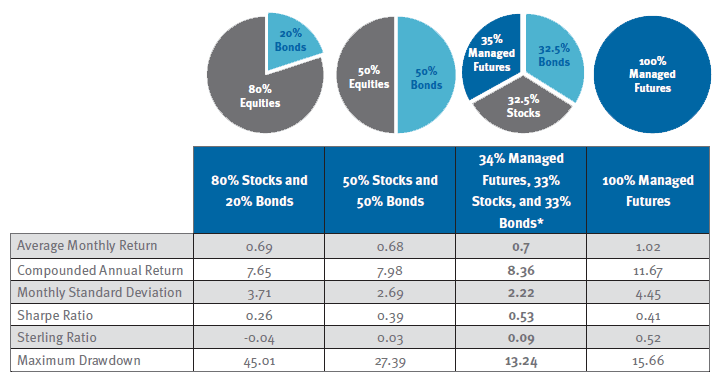5 Retirement MustKnows Retirement Center
Post on: 14 Июль, 2015 No Comment

Everything you need to know about retirement planning on a single Web page
Discussion Boards
By Robert Brokamp
Human beings, it is said, are distinguished from our animal cousins (no slur against the in-laws intended) by our ability to plan ahead. While that may be true, it’s difficult enough for most of us to plan anything just six months ahead, like summer vacation. So how on earth are we supposed to deal with something in the distant future — like retirement?
In an effort to kick-start your retirement plans, we’ll take a cue from the animal kingdom’s fight or flight mentality and scare you into action: If you don’t do something right now to assure your retirement, you’ll end up living in an alley fighting the stray cats for your dinner.
Now that we’ve raised your hackles, let’s use that surge of adrenaline to your advantage. As subscribers to the Rule Your Retirement newsletter know, retirement brings on a set of extremely complicated decisions — many of them all at once. However, when it comes to The Eternal Truths About Retirement (I’m going to see about patenting that title), the rules are pretty simple. Below, on this single page in cyberspace, are the five retirement truths that will prepare you for the future when it turns inexorably into the present.
1. This isn’t your parents’ retirement.
Think back about 30 years. Individual retirement accounts (IRAs) were just being created. There were no such things as 401(k)s. Gasoline was free. (Or at least it seems that way in hindsight.) Older folks relied on the proverbial three-legged stool to prop them up in their golden years: Social Security, pension checks, and savings. Retirement didn’t last too long because life expectancies didn’t go far beyond the age of 70. The average male didn’t even make it that far.
Your retirement will be very different. You will live longer, and you’ll have a more active (read: expensive) lifestyle. Your parents may have survived on 70% of their pre-retirement income (perhaps you’ve heard this common rule of thumb?). But that’s probably not enough for you.
2. No one’s got your back. Sorry ’bout that.
If you put your retirement on that proverbial three-legged stool, there’s a good chance it’s going to collapse. Why? Let’s do a little structural engineering and see how each leg is holding up.
Social Security: As of 2004, the average annual Social Security retirement benefit is approximately $11,000. In other words, retirees cannot live on Social Security alone. And don’t expect that to change. As the baby boomers retire and put a strain on Social Security, benefits will have to be cut or taxes raised. For those in or near retirement, your benefits are pretty safe. (See? We don’t have it out for the in-laws at all.) For the younger crowd, don’t count on receiving all of the benefit estimated in the statement sent to you by the Social Security Administration every year, three months before your birthday.
Defined-benefit plans (a.k.a. traditional pensions): The amount you’ll receive from a traditional pension depends, first of all, on whether you work for a company that offers one. Most of us don’t. In fact, only 20% of Americans have such a benefit, down from 40% in 1975. If you are among the lucky one in five, the benefit you’ll receive is based on your salary and the number of years you worked for that employer. Since we’ve become a mobile workforce, many people don’t stay in a plan long enough to accrue significant benefits. The average annual defined-benefit payout is less than $10,000. Plus — unlike Social Security benefits — most benefits aren’t adjusted for inflation over the years.
Savings: Of the three legs that may prop up your retirement, your personal savings are what you have the most control over. So while two out of three of those stool legs have some pretty serious cracks, this leg is as strong as you want to make it. Thd good news is that this one decision — to save or not to save — will have the biggest impact on the quality of your post-work life.
3. It’s never too early — or too late — to warm up your nest egg.
You can brag all you want to your son-in-law about that 34-inch waistline you maintained through your 30-year high school reunion. Photographic proof is all you need to keep that young whippersnapper in line.
Same with savings scenarios. We can yammer all we want about the factors that affect the size of your nest egg. Instead, we’ll regale you with a few pictures.
Even though each person invested the same amount of money, they have significantly different amounts at retirement. For example, Investor A began investing $5,000 a year when she was 25 years old and stopped when she was 35. For the next 30 years, she didn’t contribute any more money and she didn’t withdraw any money. She just left the account alone.
Investor B, on the other hand, waited until he was 35 years old and contributed $5,000 a year until he was 45. As you can see, that difference of a decade is substantial. At retirement, Investor A has $422,5671 more than Investor B — over twice as much. In fact, each investor in the chart above has more than twice as much as the person who started 10 years later (except for Investor D, of course, but she’s a lot better off starting at age 55 than someone who waited until age 65).
As you can see, three things — that are completely under your control — can have a sizable impact on your retirement kitty: 1) how much you invest, 2) the rate of return you earn on your investments, and 3) the number of years those investments have to grow. No matter your age, the sooner you start, the more money — and options — you’ll have.
4. There’s really only one place your retirement savings should go.
While we’ve got our calculators out, let’s take a look at various investments’ average annual returns from 1926-2003 (source: Ibbotson Associates):
- Treasury bills: 3.7%
- Intermediate-term Treasury bonds: 5.4%
- Large-cap stocks: 10.42%
- Small-cap stocks: 12.7%

If investments squared off in a basketball game, stocks would be Michael Jordan and bonds would be Michael Jackson. In other words, stocks beat the pants off of bonds. But not without drawbacks.
On the Rule Your Retirement -dedicated discussion boards, we often get questions from early retirees (55-year-old whippersnappers, for instance) who wonder if 50% of their investments should be in bonds. Phooey.
Market risk (the chance you will lose money) and reward (the chance that your investments will head skyward) travel hand-in-hand in the daily marketplace. The greater the risk, the greater will be the potential return for taking that risk. Equally true is the potential for loss, which quite handily explains why taking that risk should pay a greater reward. By and large, however, risk is pretty much a short-term phenomenon. That’s particularly true in the stock market, which many regard as a quite risky investment.
Fools recognize that the stock market shifts every day, sometimes sharply downward. That can be absolutely gut-wrenching when it occurs. Heck, from 2000 to 2002, many people lost more than half their life savings in the market. But history shows us that the inexorable pressure on the stock market is upward. The biggest bang for our buck will be found in stocks.
According to Jeremy Siegel’s Stocks for the Long Run. for every rolling five-year investing period from 1802 to 2002 (i.e. 1802-1807, 1803-1808, etc.), stocks outperformed bonds 80% of the time. Stocks beat bonds for 90% of the rolling 10-year periods, and essentially 100% of the rolling 30-year periods. For holding periods of 17 years or more, stocks have always beaten inflation, a claim bonds can’t make.
Think now about your retirement. When will it occur — 20 years from now, five years, tomorrow? If you’re close to it, or are already retired, how long must the money last? Now think about your retirement investments. Is the bulk of your money positioned for long-term growth (read: stocks) or short-term stability and income (read: bonds and bills)? The mix you have in these instruments is something you must decide for yourself.
After all, you’re the one who has to sleep at night. Recognize, though, that investing for retirement is a long-term goal. Hence, you truly want to shoot for the best growth in your investments that you can get. That won’t be found in bonds or bills over the long haul. If you elect to keep most of your money there, almost assuredly in retirement you will be eating Beanie Weenies because you have to, not because you want to.
5. When Uncle Sam (or your boss) gives you an inch, take a mile.
As we approach the end of our room in cyberspace (we did promise all the retirement truths you need to know on a single page, after all), we come to our last revelation. It is, quite simply, this:
Be greedy.
As the number of defined-benefit plans has declined, the number of defined-contribution plans — e.g. 401(k)s, 403(b)s, and 457s — has increased. Your contributions to such a plan lower your taxable income dollar for dollar, so you immediately cut your income tax bill. (Be greedy!) Plus, the investments grow tax-deferred — i.e. you don’t pay taxes on the growth and income until you make withdrawals in retirement — leaving more of your money to compound through the years. (Take it! Take it!) As a third bonus, your boss might pay you to save by matching your contributions. For example, the company might add 50 cents to your account for every dollar you sock away. (Freebies! Grab! Grab!)
These five truths about retirement should help clear your mind. If you’re champing at the bit for more, try a 30-day free trial of our Rule Your Retirement newsletter service. Join me, my research team, and thousands of ordinary investors as we take control of our financial destinies.














